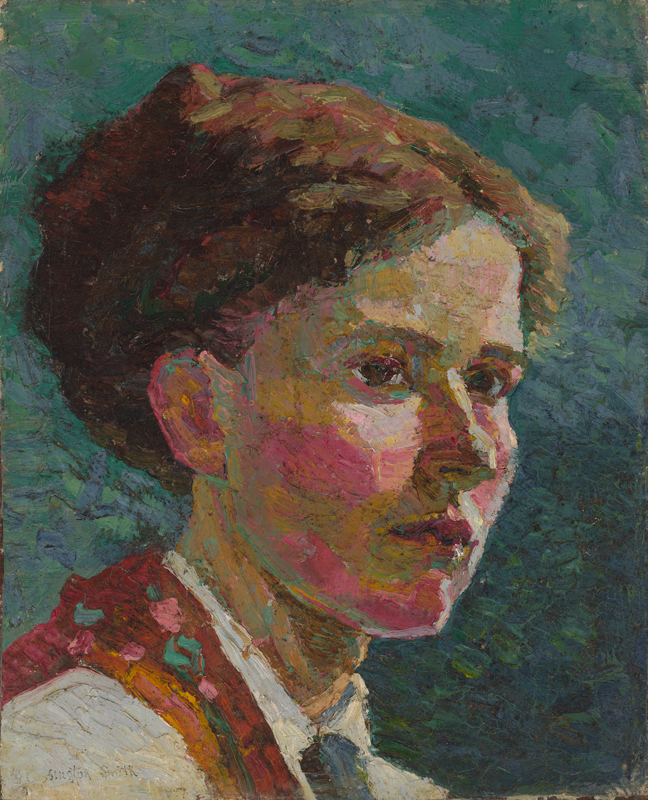About Grace Cossington Smith
Grace Cossington Smith OBE, AO is one of Australia’s most celebrated modernist painters, renowned for her iconic Sydney cityscapes and luminous interiors.
One of the first artists in the country to be influenced by the European post-Impressionist movement, her aim, she said, was ‘to express form in colour – colour within colour, vibrant with light’. She is best known for her modernist depiction Sydney city life, in particular the construction of the Sydney Harbour Bridge and the domestic interiors of ‘Cossington’, her beloved Turramurra home, which are filled with memories, affection and her astonishing powers as a colourist.
Location
Accessibility
Category
Share and save

Starting out
Grace Cossington Smith was born in Sydney in 1892 to an affluent English migrant family. The second of 5 children, she grew up in Neutral Bay on Sydney’s north shore.
Grace studied drawing at school before enrolling in classes with the artist Antonio Dattilo Rubbo in 1910 and in 1912 she travelled abroad for further study. In England, Grace encountered works by British modernists for the first time.
Home in Turramurra
Grace came back to Sydney and her family’s house at Turramurra in 1914. Renamed ‘Cossington’ in 1920, it remained Grace’s home for the rest of her working life and became the subject of many of her later paintings.
Returning to Dattilo Rubbo’s classes, joining contemporaries Roland Wakelin and Roy de Maistre, she studied European modern art and began to paint for the first time. Her parents ‘were keen about’ her painting and her father built her a small studio in the garden.
Modernist pioneer
In October 1915, Grace exhibited her first painting, her student work The Sock Knitter, depicting her sister, Margaret, knitting socks for soldiers serving in the First World War. It was ‘perhaps the first fully Post-Impressionist work painted in Australia’ revealing the influence of post-impressionist European painters.
In the 1920s, Grace produced a series of paintings of the Sydney Harbour Bridge under construction. These captured the excitement and energy of city life and include the masterpiece The Curve of the Bridge (1928-29).
In 1926, Cossington Smith joined Thea Proctor, Ralph Balson, Grace Crowley, Roland Wakelin and other modernist artists in the ‘Contemporary’ and she exhibited with them for many years. Her first solo exhibition was held at Grosvenor Galleries in Sydney in 1928 and she continued to exhibit at the Macquarie Galleries from 1932 until 1971.
Grace celebrated modern Sydney of the inter-war years with paintings including The Lacquer Room (1936). In the 1940s she was working increasingly in landscape. By the mid 1950s however, she turned her artistic focus to interiors when caring for her sister and largely restricted to ‘Cossington’. She produced two significant paintings Interior with wardrobe mirror (1955) and The Window (1956) in this time.
National acclaim
Although Grace’s works were collected by Australian galleries in the 1940s, national acclaim came late. With Bernard Smith’s 1962 publication Australian Painting her work became more widely known and recognised. She was ‘rediscovered’ with a major retrospective of her work at the Art Gallery of NSW in 1973. The curator of this exhibition, Daniel Thomas, reported that Grace ‘let slip that wide recognition at 81 was rather late, and that her open-hearted offerings of delight in what she saw around her could have been welcomed earlier’.
More retrospectives, such as the 2005 exhibition at the Art Gallery of South Australia, have followed. In 1973 she was awarded an OBE and in 1983, shortly before her death, she was made an Officer of the Order of Australia for her services to art.
Today, she is celebrated as an important early exponent of the modernist style in Australia.
